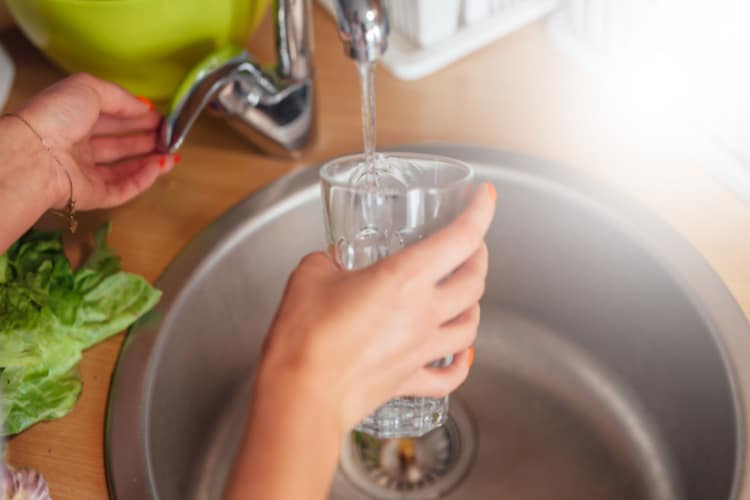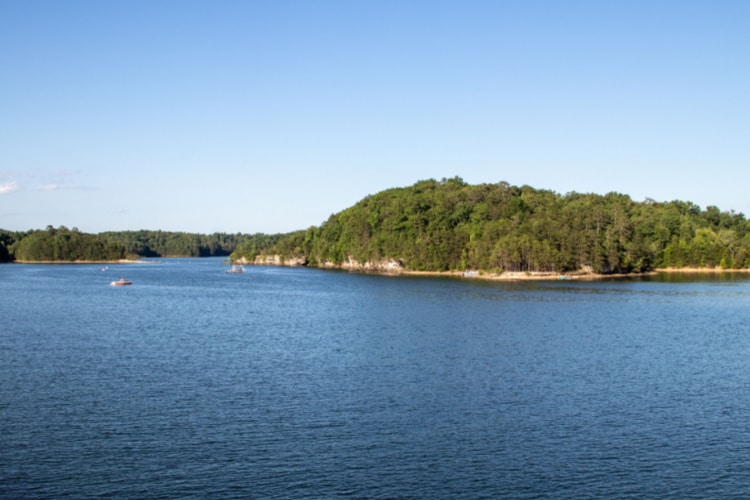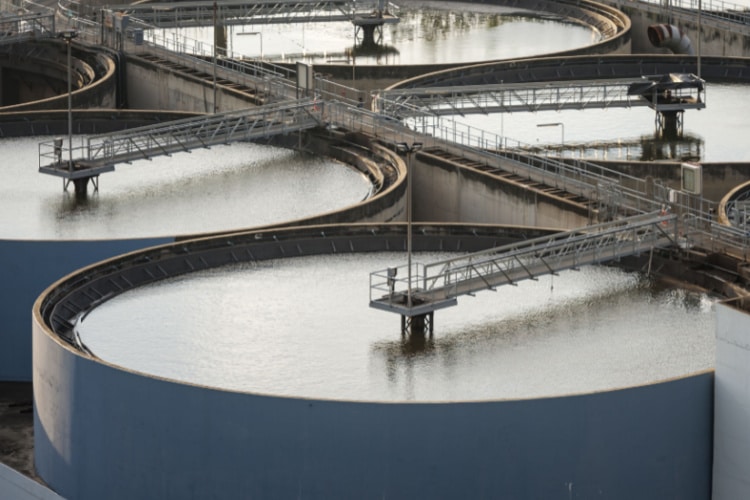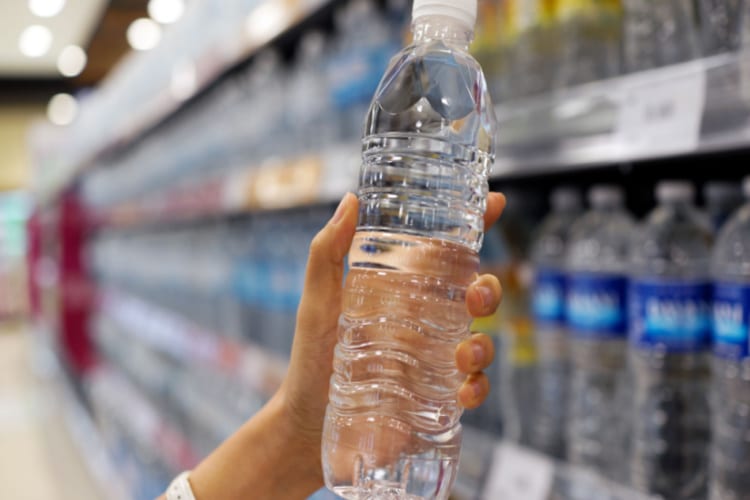Generally, tap water in the Philippines isn’t safe to drink. The capital city of Manila is the only place where water is centrally treated and is at levels considered safe to drink.
Residents typically use water filters for the household, and travelers and tourists are recommended to purchase bottled water during their stay.

Is Philippines Tap Water Safe To Drink?
Tap water in the Philippines is unsafe to drink. There have been massive improvements to the country’s water infrastructure in recent years, but access to clean water remains an issue in most parts of the country.
The World Health Organization (WHO) and the United Nations International Children’s Emergency Fund (UNICEF) Joint Monitoring Program for Water Supply, Sanitation, and Hygiene began monitoring worldwide water supply in 2000. The water supply in the Philippines has improved since 2000, most notably in the categories of access to water and water safety.
In 2015, the WHO and UNICEF Joint Monitoring Program reported that around 74% of the population in the Philippines had access to improved sanitation. The lack of access to improved sanitation is one of the primary factors in water pollution in the country.
Visitors, tourists, and people with sensitive stomachs are considered the most at risk for illness from tap water consumption. Many residents consume tap water with no issue, but a visitor not acclimated to the water is at greater risk.
Is the Water Hard or Soft?
Studies show that water in the Philippines is moderately hard.
Water hardness refers to the number of minerals found in a water sample. Water with a high mineral content is “hard,” and water with a low mineral content is “soft.”
Minerals such as calcium, magnesium carbonates, and sulfates contribute to water hardness. There are many issues associated with hard water, such as:
- Soap scum buildup on faucets
- Low water pressure
- Skin irritation
- Strange odor or taste in tap water
- Appliances running less efficiently
The Metro Manila area has several districts with reported soft water, though there were still some areas with moderately hard water. Places outside Metro Manila typically have harder water due to the poor water infrastructure. Old pipes are a primary cause of hard water in many households.
Best Philippines Cities with the Cleanest Water
The country’s capital, Manila, is the only place where tap water is considered safe and drinkable. Manila’s water guidelines are pretty stringent, and all tap water in the Metro Manila area is treated and purified.
Who Regulates Water in the Philippines?
The Food and Drug Administration (FDA) of the Philippines is in charge of regulating water. The organization sets the national standards for the water supply, known as the Philippine National Standards for Drinking Water (PNSDW).
Although a government organization sets the standards for water quality, the management, supply, and distribution of water are decentralized and primarily left to private organizations.
Where the Philippines Gets its Water From
The Philippines is a natural resource-rich country, including its water. The primary sources of water for the country are:

- River basins
- Rivers and lakes
- Groundwater reservoirs
In the Philippines, there are 438 major dams and 423 minor dams, primarily used for water storage, power production, water supply, and flood mitigation.
Lakes in the Philippines are used for fish farming and cultivation, not as surface water sources.
The largest, longest river in the Philippines is the Cagayan River. The river is 56 miles long and boasts a basin size of 587 square miles.
The primary groundwater reservoirs of the Philippines are Central Luzon, Cotabato, Agusan, and Cagayan.
Manila
As the capital city, Manila’s water supply is centralized. Manila is the only city in the Philippines that offers drinkable water, as they have a comprehensive water treatment system. Two companies provide water to Manila: Maynilad and Manila Water.
The Manila water supply gets sourced from the Angat, Ipo, and La Mesa Dams. The water from these dams gets transported to the La Mesa or Balara water treatment plants.
Major Rural Dams
Several rural dams supply rural areas in the Philippines.
Ambuklao Dam
This dam is used for flood control, hydroelectric power production for Baguio and Luzon, and irrigation.
Magat Dam
This dam is used for irrigation and hydroelectric power production for Isabela.
How Tap Water Is Treated in the Philippines
Tap water in the Philippines is largely untreated, excluding the capital city of Manila.
In Manila, water gets supplied by the Angat, Ipo, and La Mesa dams and then treated in the La Mesa or Balara water treatment plants. These treatment plants handle raw water and produce potable (drinkable) water according to the PNSDW standards.

Water treatment at the plants consists of eight steps.
Screening
Screening parses out large debris found in surface water, such as logs, branches, rocks, and trash. The screens that filter large debris must get cleaned frequently to prevent clogs from forming in the channels.
Pre-Chlorination
Pre-Chlorination is a form of disinfection. Chlorine is added to the water to kill any organisms that may be present.
Rapid Mixing
Coagulation chemicals such as polymer and aluminum sulfate are added to the water. These chemicals create “flocs” in the water, clusters of water impurities, such as organic matter and solids. The water is mechanically mixed to help create these flocs.
Flocculation
The flocs created in the previous step fall to the bottom of the water as they grow in size. The water is mixed again to help the flocs grow and combine any materials that will later be filtered out. Polymers are also used to parse out particles that don’t form flocs well.
Coagulation
The water is combined with aluminum sulfate and mixed to create larger particles of impurities. The addition of chemicals draws the impurities toward each other.
Sedimentation
When water is left to sit, small particles, such as sand and dirt, will fall to the bottom. This step allows small particles that don’t react to chemicals to gather at the bottom.
Filtration
In filtration, the water is passed through several filters, often made of different materials, such as sand and gravel. The varying sizes of filters help remove clusters, flocs, or any other impurities.
Disinfection
In the final step, the water is disinfected with chlorine to kill any lingering bacteria or germs. Chlorine is effective in ridding water of bacteria and germs that cause illness. This final method of disinfection ensures that drinking water isn’t contaminated with impurities that may make citizens ill.
Is Drinking Bottled Water the Safest Option in the Philippines?
The Centers for Disease Control and Prevention (CDC) recommend drinking bottled or filtered water.

For travellers, using bottled and filtered water will be necessary as the water may upset the stomach because they aren’t used to it.
Several waterborne illnesses may impact a person who drinks contaminated water in the Philippines. In the Philippines, the common waterborne illnesses to monitor are cholera, Typhoid Fever, and Leptospirosis.
Cholera
Cholera is an infection caused by contaminated food or water that contains the bacterium Vibrio cholera. The primary symptom of cholera infection is severe diarrhea. If left untreated, the illness can be deadly.
Typhoid Fever
Typhoid fever is an illness caused by Salmonella Typhi bacteria. It is severe and life-threatening.
Poor water and sanitation infrastructure is the leading cause of the contraction of Typhoid fever, which is why less-developed and developing countries are at greater risk. A high, sustained fever is the primary symptom of Typhoid fever.
Leptospirosis
Leptospirosis is a bacterial infection caused by the bacteria Leptospira. Swimming or wading in contaminated water may result in Leptospirosis. The bacterial infection also affects animals, so people who work with animals in areas known to host Leptospirosis are at greater risk.
Areas prone to hurricanes, such as the Philippines, are also at risk as rising water levels lead to bacteria spread, which may infect more individuals and animals. Leptospirosis can cause long-term damage if left untreated, such as kidney damage, liver damage, or even death.
Are Water Filters Necessary in the Philippines?
Water filters are necessary for the Philippines, as a small amount of tap water is considered safe to drink. Households are recommended to use a water filter as a safety precaution, especially in areas where there have been known instances of water pollution.
The CDC covers the many options of household water filters available on the market. Many water filters in the Philippines are low-cost, which may mean they are not well-made. A good way of checking if your water filter is fit to serve as a proper household filter is to ensure it has an NSF certification.